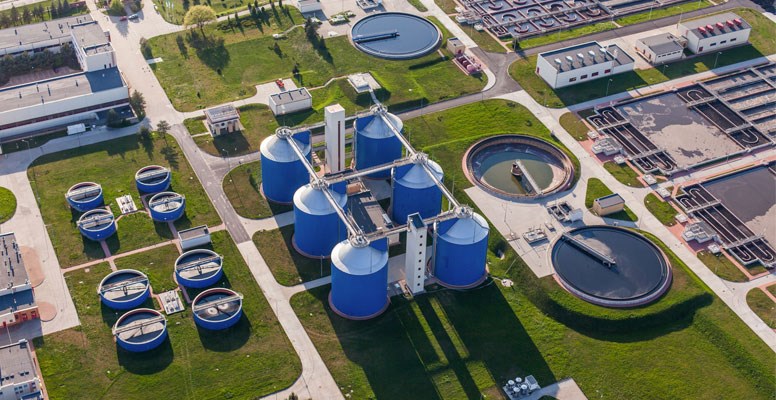Do You Know What Chloramine Is And If It's In Your Water?
How does chloramine affect water and how to remove it.
Chloramine Use in United States Municipal Water Supplies
There are nearly 250,000 public water systems in the United States, serving about 90 percent of the population. Approximately 98 percent of these water utilities use chlorine or chloramine as part of their disinfection process to control bacteria, viruses, and other harmful microorganisms. By law, utilities must provide a Consumer Confidence Report—also called an Annual Water Quality Report—every year.
What is A Consumer Confidence Report?
This report tells you where your drinking water comes from and lists what is in it, including chlorine, chloramine, and other detected substances, along with their levels. Reviewing this report helps homeowners better understand their local water quality and potential concerns. In 2025, many people also choose to have their water independently tested for added peace of mind, since chlorine and chloramine can affect water’s taste, odor, and even household plumbing over time. For those who want better-tasting water, installing a home water filtration system can significantly reduce these chemicals while still protecting against harmful contaminants.
Concerned About Chloramine in Your Water?
Contact Your Kinetico Water Expert Today to Improve Your Water
Fill out your information below and we’ll have one of our authorized, independent Kinetico dealers contact you to schedule your free in-home water test.
In the last decade, chloramine use for disinfection has nearly doubled with an estimated 35-40 percent of municipalities using chloramine. Some municipalities occasionally switch between disinfecting with chlorine or chloramine, depending on temporary changes in water conditions and the market cost of the disinfectant. Industry analysts expect the growth trend in chloramine usage to continue.
About Disinfection

Water treatment facilities have disinfected drinking water for decades to deactivate microorganisms that may pose a health risk in the public water supply. Chlorine is the most widely used disinfectant for potable water in the United States, based on its low cost and reliable effectiveness. Public utilities may chlorinate the water supply several times during the treatment process, often including a final step before releasing the treated water into the distribution system. Maintaining a level of disinfectant in the water as it travels through the distribution system is critical. Once the water enters a home, however, chlorine or chloramine is no longer needed and its presence often poses problems such as dry skin and hair, ruined rubber seals, bad tastes and odors as well as other issues.
Despite its cost and efficacy benefits, free chlorine has been found to combine with naturally occurring organic matter in water distribution systems to form disinfection byproducts (DBPs) like trihalomethanes, which have been linked to health effects like cancer in laboratory testing. As a result, some water utilities have turned to chloramine as an alternative to chlorine, either by choice or by updated local regulations.
What is Chloramine?
Chloramine is an inorganic compound created by combining free chlorine – the type of chlorine typically found in municipal water – with ammonia. It cannot be purchased and must be created onsite at water treatment facilities. It is more stable chemically than chlorine and retains its effectiveness for a longer period of time within water distribution systems. It also produces lower levels of DBPs in distribution systems. As a result, chloramine is emerging as the best available technology for public water disinfection. Chloramine is regulated by the US EPA, with a maximum contaminant level of four mg/L (ppm).
Schedule A Free Water Test To See If Your Water Contains Chloramine
In the last decade, chloramine use for disinfection has nearly doubled with an estimated 35-40 percent of municipalities using chloramine. Some municipalities occasionally switch between disinfecting with chlorine or chloramine.
How to Remove Chloramine
Like chlorine, chloramine can be removed with whole-home or point-of-use carbon filtration. Removal increases with the activation level of the carbon. Unlike chlorine, chloramine is a relatively stable molecule, and therefore requires a more reactive media and longer contact time for effective removal. Standard activated carbon – either coconut shell or coal-based – does an excellent job at filtering free chlorine, but does very little to remove chloramine. Contrary to a common belief, standard activated carbon does NOT remove the chlorine from a chloramine molecule, leaving only ammonia behind.
Catalytic carbon beds are quite effective at filtering chloramine, and for the last decade have been the media of choice. Catalytic carbon will remove chloramine for a year or more depending on load levels and flow rates, but will eventually become exhausted and will need to be replaced. It is a relatively expensive alternative to activated carbon, costing roughly twice as much.
Hollow-core carbons (HCCs), like those used in Kinetico Chloraban®, represent the next generation of carbon filtration media. HCCs have up to 10 times the active filtration sites on each carbon particle, providing a dramatic increase in filtration capacity and media bed life. Initial estimates, based on laboratory testing of a whole-home filter, suggest that HCCs may effectively remove chloramine for up to four years depending on the variables. HCCs are more expensive than catalytic carbons, but the higher filtration capacity and substantially longer bed life must be considered when evaluating media options for chloramine filtration.
How Kinetico can help
Chloramine Reduction System
If your home uses a dechlorination system, it will not reduce chloramines effectively. Kinetico’s Chloramine Reduction System (CRS) uses our exclusive media, Chloraban®, which reduces the level of both chloramine and chlorine in your water. Kinetico CRS systems are the only residential systems certified by the Water Quality Association for whole-house reduction of chloramine.

K5 Drinking Water Station
Kinetico also offers a Chloramine Guard FlexFilter for our K5 Drinking Water Station. With the Chloramine Guard auxiliary filter, your drinking water system will have a filter that is also third-party certified for the reduction of chloramine.
Contact your local Kinetico dealer to have your water tested. After they have tested your water, they will be able to design a water treatment plan to reduce the levels of chloramine and other contaminants that may be in your water.
Contact Your Local Kinetico Dealer to Improve Your Water

